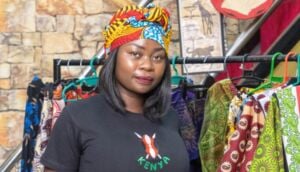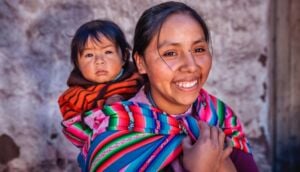As scientists move closer to an effective COVID-19 vaccine, the global health community is preparing for how it will build trust in its safety and efficacy. GAVI (The Vaccine Alliance) Civil Society Constituency recently convened a webinar on Keeping Trust in Immunisation: Community Perceptions of Vaccination in the time of COVID-19 to explore the communication groundwork required to ensure effective vaccine uptake. The webinar gave us an opportunity to share what could help instil trust and raise confidence in vaccines.
We have worked together in health communication at BBC Media Action for over 10 years – including normalising condom use during the height of the HIV and AIDS crisis in India, and making a drama as part of our Ebola response work in West Africa. Now, BBC Media Action is researching, producing and disseminating content on COVID-19 in more than 50 languages, reaching 60 million people around the world.
Well-designed communication can increase healthy behaviours, including vaccine uptake. Here are our top five mantras for how to think about COVID-19 vaccine communication.
Mantra #1: Get ahead of the challenge – we need to act now
The need of the hour is to get in front of this challenge – before a vaccine becomes available.
We’ve heard a lot of experts say things like, “let’s wait for the vaccine to come out… we don’t yet have funding for total access… we need to sort out the supply chain first…” and so on. Ensuring equitable access to the vaccine is a real challenge that deserves attention. But there is one important caveat: We can’t wait. Taking a linear approach ignores the fact that people do not wait to think about what they want and need until the product is in front of them.
News about the vaccine is everywhere. People are already forming opinions and sharing their views with others. There is much anticipation, expectation and anxiety. If we wait to do the preparation required to produce effective campaigns around vaccination, it may be too late.
Here’s what we need to do now. We need a greater understanding of where vaccine hesitancy is likely to be prevalent, so that we can plan and design effective communication interventions. As a global community, we do not yet know the scale of potential resistance to a vaccine. More research will inform where we need to focus our communication efforts.
There is already evidence that vaccine attitudes are linked to broader issues of trust in government and health systems. We need to look at areas where this lack of trust exists, and at communities that have historically been resistant to vaccines. We may also find new vaccine-hesitant communities along the way.
Mantra #2: This science is going to need some art and craft
Simply presenting the facts in a scientific way is often insufficient to change attitudes and beliefs around vaccines. The behavioural barriers to vaccine uptake are deeply rooted in experience and culture, and further entrenched by misinformation and peer pressure. Anti-vaccine content is compelling and driven by emotion.
Communication aimed at building trust in vaccines has to respond to people’s real fears. It needs to connect emotionally, tap into people’s values, feature trusted leaders, and allow space for people to voice their concerns.
Alongside the science, we need creative strategies and execution – the art and craft of effective communication. This includes narratives that focus on dialogue, not preaching. We need socio-cultural insights, big ideas, stories and storytellers; we need new language for frontline health workers and influencers; we need interesting, engaging formats. We need to disrupt.
At BBC Media Action, we’ve been doing this effectively around the world, including in Afghanistan, Nigeria and Somalia, where we worked with communities to prepare the ground for the arrival of polio vaccinators. This work allowed people to digest culturally sensitive information in advance of the vaccination campaigns.
Mantra #3: This global problem requires a local shot in the arm
This cannot be one global campaign designed in offices in New York, London or Geneva. Top-down, centrally designed, rapidly produced outputs for mass dissemination simply won’t work. There are universal facts about vaccines, some common reasons for hesitancy, and even some common insights into why this is so.
But vaccine decisions are personal. Communication for behaviour change has to be made by and with the people it is trying to reach, rich in cultural insights and psychosocial nuances. We need to understand prevailing narratives to address them robustly and respectfully. This means going beyond producing vaccine communication centrally, and merely translating and slightly adapting. It might mean entirely different communication strategies for different communities.
Mantra #4: Information is everywhere. We need a whole ecosystem approach
A local response as opposed to a ‘one-size-fits-all’ global campaign allows us to take a holistic understanding of the entire information ecosystem. In real life, people get information from multiple sources throughout their day. If we seek to shift behaviours, we need to reach people in multiple ways too.
For example, at BBC Media Action, we assess the information environment and develop a Theory of Change that addresses multiple audience segments to achieve different outcomes. For example, in one country, we might train media professionals, build the capacity of members of women’s economic collectives and create communication outputs for communities. In another country, we may focus on building trust in health workers and finding influential supporters, such as religious and other community leaders, well in advance of vaccine availability.
Technology plays a huge role in shaping the information environment. While it is critical to use algorithms to reduce exposure to mis- and disinformation, these are only part of the solution. Algorithms can shut down searches, but they have no impact on private messaging apps, in village squares and at kitchen tables. Technology-driven solutions cannot replace genuine community engagement.
Mantra #5: Sustain and adapt. A long-haul virus requires long-haul communication
Throughout 2020, we have all seen the ever-changing nature of this pandemic. Communication strategies have to be adaptable and responsive, with tactical approaches to counter whatever the pandemic and the ‘infodemic’ throw up next.
As individual and community experiences with the pandemic change, so will attitudes towards a vaccine. Behavioural insights research will need to be mined over and over again.
This will not be a one-campaign approach. It cannot be one set of ads played right before the vaccine is rolled out. It seems clear that the vaccine will be available to different segments of the population at different times. Communication content for health workers and the elderly will be different from communication for youth, reflecting different motivations, perceptions of risk, influencers and media habits.
This work needs to be sustained and evolved over time. This is a marathon, not a sprint. It will require patience, time and resources – both financial and human.
We are in it for the long haul.
First posted on the BBC Website. Find out more about BBC Media Action’s COVID-19 response.










